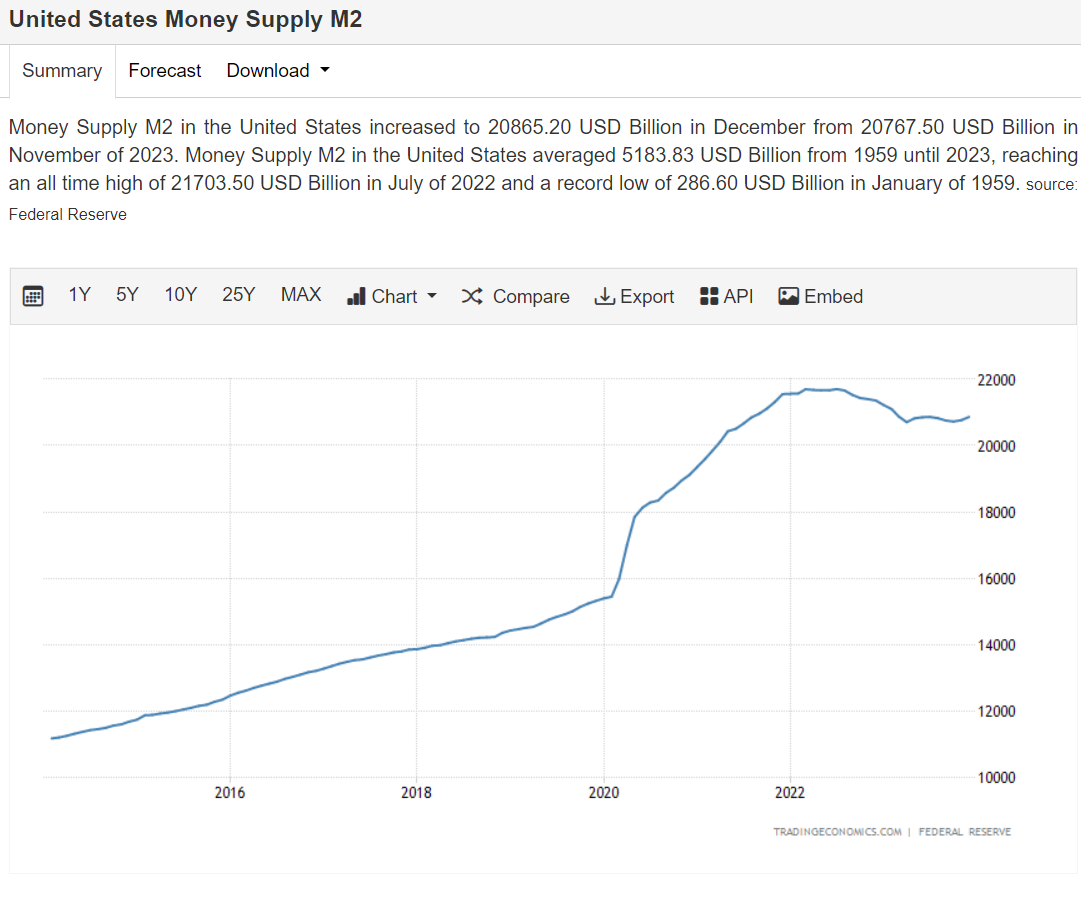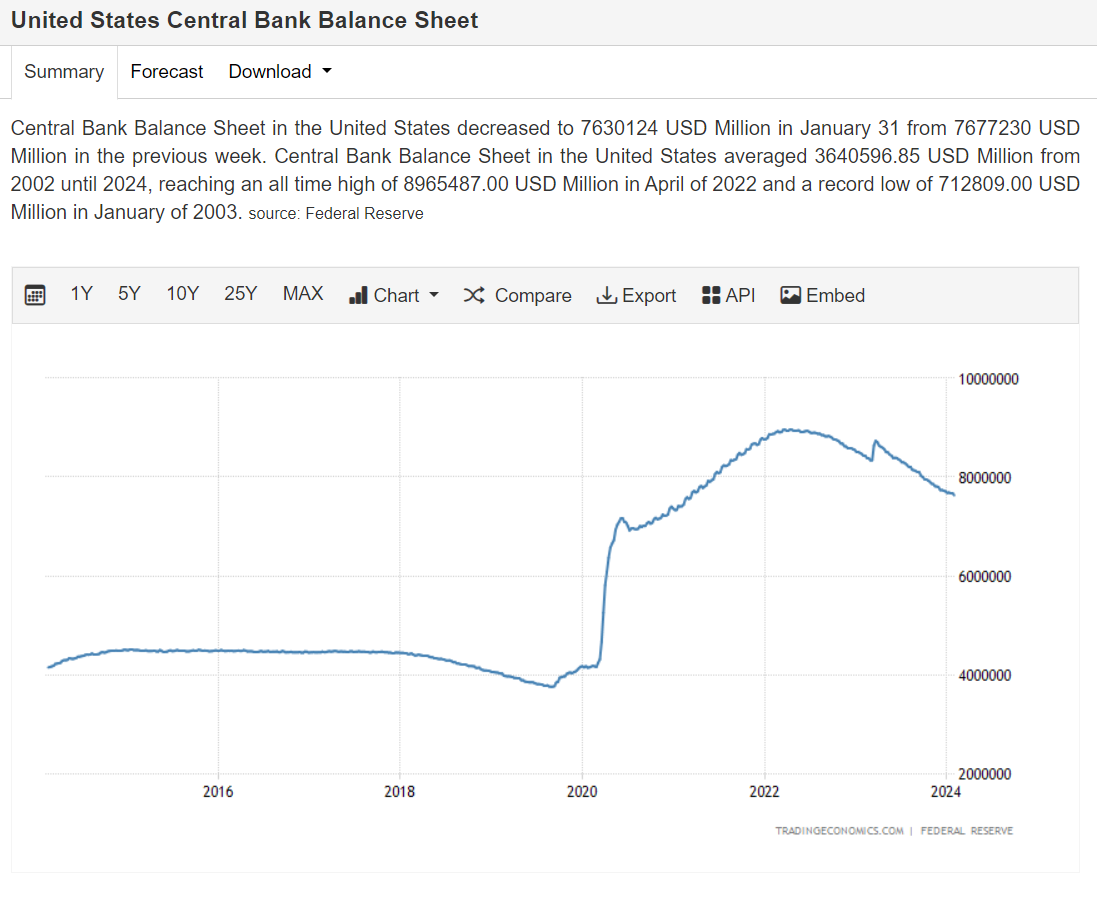Inflation January 2024 – Reality Check


Last week, the US Department of Labor released the inflation data for January 2024. There are multiple measures of inflation, but we will focus on the most widely followed measure – the Consumer Price Index (CPI).
The change in CPI for January 2024 was expected to be 0,20%, while the actual number was 0,30%. The higher reading caused 10-year rates to increase by 0,10% from around 4,2% to 4,3%, while expectations for the first interest rate cut were moved from May 2024 to June 2024.
This is what occurred. However, the higher monthly reading caused many traders, journalists, and commentators to speculate that the Fed may not lower rates in 2024.
While we do not know what the Fed will or will not do, it is essential to understand that inflation is a monetary phenomenon! It is not an unpredictable but a monetary phenomenon – for inflation to exist, new money must be printed.
There is no other alternative. To believe otherwise is to think it is possible to gain weight even if you do not eat anything.
Analyzing Monetary Policy and Inflation Trends
This reminds us of a story: April 20, 2021, and it snowed in Sofia. Not only snowed, but snow accumulated, and it froze overnight. Why did people not freak out that summer might not come?
Because it was late April, days were getting longer, and seasonality suggested that this weather pattern would not stay.
Similarly, the higher inflationary data for January is inconsistent with the money supply patterns in the US; hence, it should not persist. It is unusual to get such a monthly reading, but to get several months in a row of inflation above 0,20% would be next to impossible. Just like because it snowed in late April 2021, it did not spell snow in May 2021.
What are those money supply patterns? Let’s start with Money Supply M2.
Since 2022, the Fed has controlled M2 while the economy is growing. Nobel Laureate Prof Friedman has suggested that the effect of the restrictive monetary policy usually takes 6-18 months to manifest fully.
Yes, the impact of the Fed raising rates in 2022 and 2023 and restricting M2 should show their complete effect in 2024.
The other pattern is the Central Bank Balance Sheet.
Key Takeaways
The Federal Reserve is committed to combating inflation. Even with monthly inflation at 0.3%, what does this imply annually – 3.6% or close to that? Where are Fed Funds? At 5.3%.
Indeed, interest rates surpass inflation and even the most pessimistic forecasts for US inflation don’t foresee it exceeding 3%. The Fed is expected to reduce rates in 2024 due to restrictive money supply patterns, with inflation not posing a significant concern in such a scenario.
Just as snow in April doesn’t mean a year without summer, slightly higher US inflation data for January 2024 doesn’t indicate elevated inflation for the entire year.
Get the trading edge you need in today’s markets – sign up for our monthly newsletter featuring in-depth expert analysis, hot market insights, and exclusive trading strategies.


